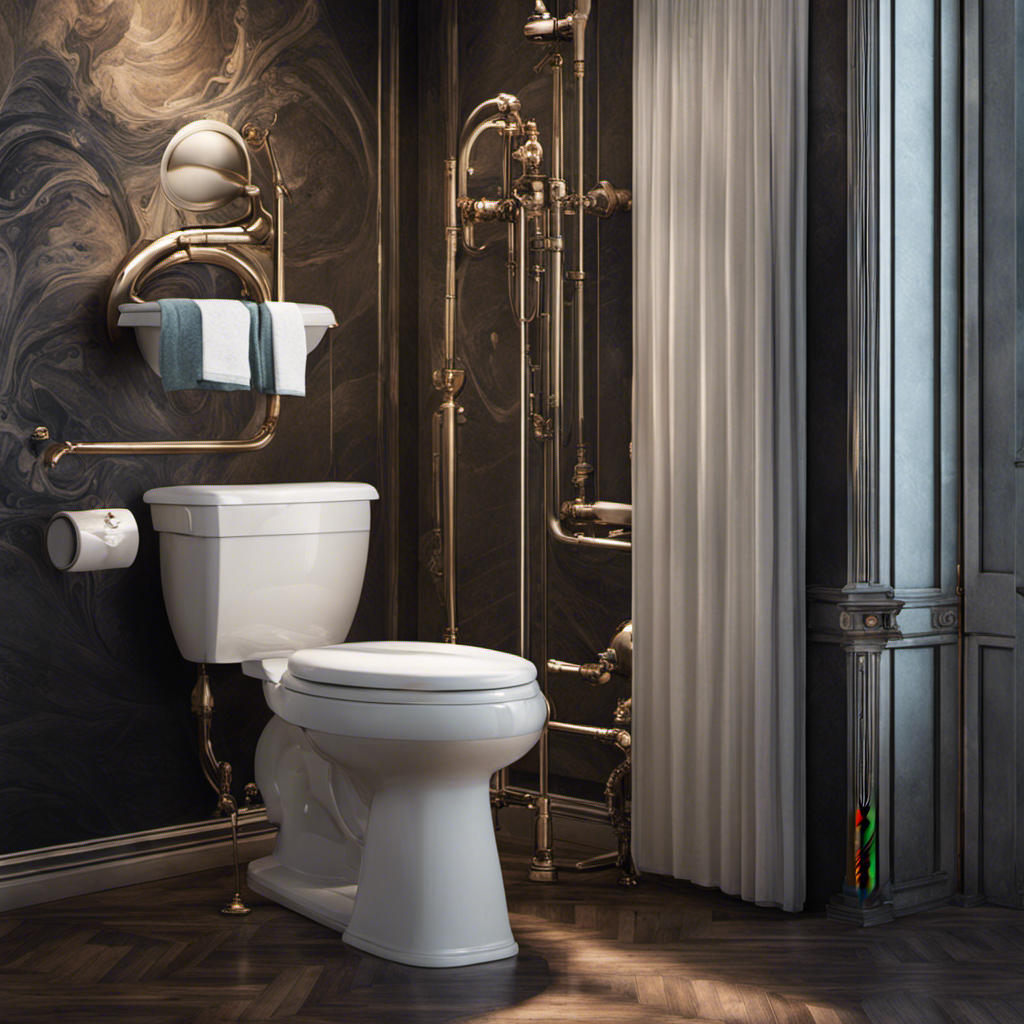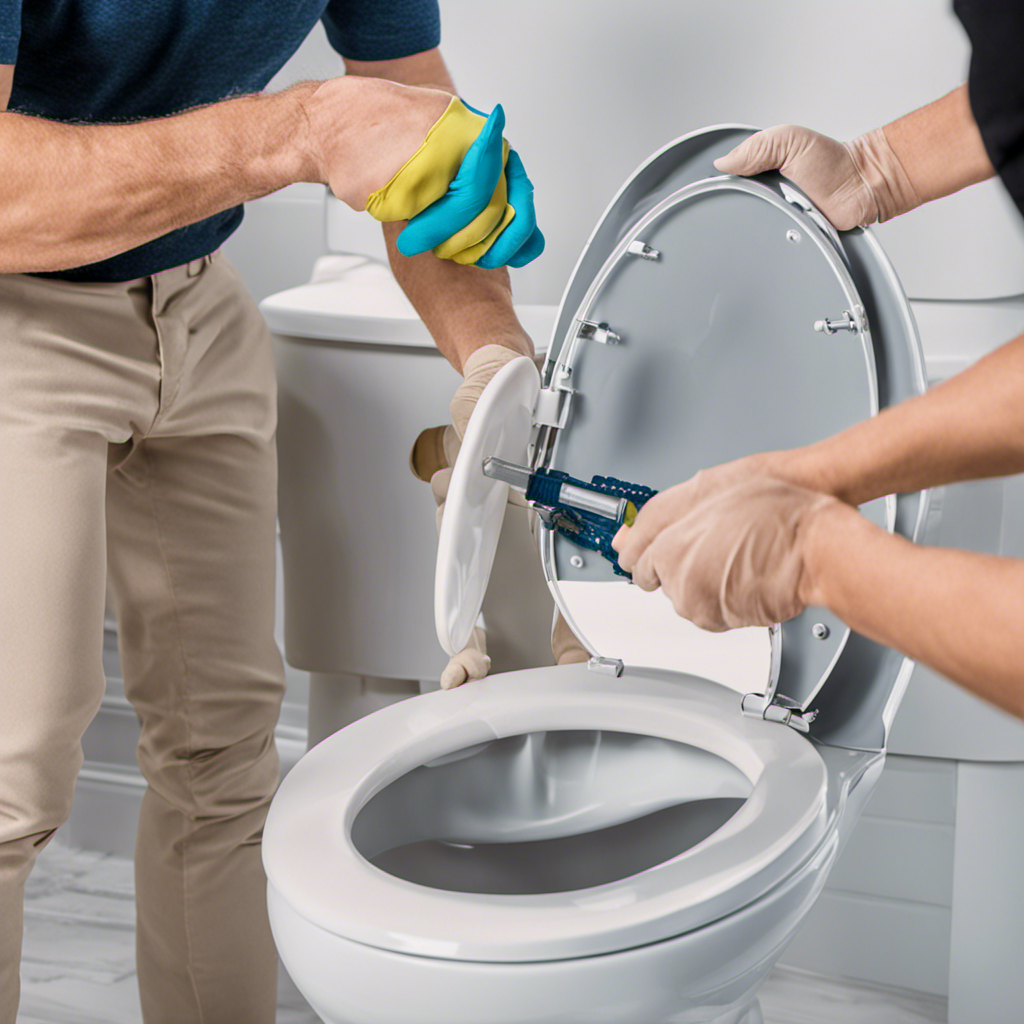As a plumbing expert, I’ve encountered many strange sounds coming from toilets. But one sound that always catches my attention is the high-pitched whistle that seems to come out of nowhere.
In this article, we’ll delve into the intriguing question: why does the toilet whistle? We’ll explore the common causes behind this phenomenon, offer practical solutions to fix it, and shed light on the role of water pressure in toilet whistling.
So, let’s dive in and unravel the mechanisms behind this mysterious sound.
Key Takeaways
- Toilet whistling can be caused by various factors such as faulty fill valves and flush valves, continuous water flow, and restricted water flow.
- Diagnosing the issue involves understanding the mechanisms behind toilet whistling and addressing the root cause.
- Adjusting the water level in the tank and consulting a professional plumber are possible solutions to fix a whistling toilet.
- Water pressure plays a significant role in toilet whistling, causing a whistling sound due to the water hammer phenomenon and impact pressure. Installing water hammer arrestors or pressure-reducing valves can help regulate water pressure and prevent sudden changes in flow direction.
Common Causes of Toilet Whistling
If your toilet is whistling, it’s usually caused by a problem with the fill valve or the flush valve. The most common cause of a whistling toilet is a faulty fill valve. This valve controls the water flow into the toilet tank and when it malfunctions, it can create a whistling sound.
Another cause could be a faulty flush valve. This valve is responsible for releasing water into the toilet bowl during flushing. If it doesn’t close properly, it can cause water to continuously flow, resulting in a whistling noise.
To fix these issues, you can try adjusting the fill valve or replacing it altogether. Cleaning or replacing the flush valve may also solve the problem. If the whistling persists, it’s best to consult a professional plumber for further assistance.
How to Fix a Whistling Toilet
To fix a whistling toilet, you can try adjusting the water level in the tank. When the water level is too low, it can cause a whistling sound as the water rushes through the pipes.
Start by locating the fill valve, which is usually on the left side of the toilet tank. Turn the adjustment screw counterclockwise to raise the water level or clockwise to lower it. Test the toilet after making the adjustment to see if the whistling noise persists.
If adjusting the water level doesn’t solve the problem, there may be other issues causing the whistle, such as a faulty fill valve or a worn-out flapper. In such cases, it is best to consult a professional plumber for further troubleshooting and toilet whistle repair.
The Role of Water Pressure in Toilet Whistling
Water pressure plays a significant role in causing a whistling sound in a toilet. When water flows through the pipes, it can create a phenomenon known as water hammer, which is a sudden increase in pressure due to a change in flow direction. This change in pressure can cause vibrations, leading to the whistling sound.
The impact pressure, caused by the sudden stoppage or change in direction of the water flow, is the main culprit behind this phenomenon. The whistling noise occurs when the impact pressure pushes against the pipes, causing them to vibrate and produce a high-pitched sound.
To prevent water hammer and the accompanying whistling sound, it is important to install water hammer arrestors or pressure-reducing valves in the plumbing system to regulate the water pressure and prevent sudden changes in flow direction.
Understanding the Mechanisms Behind Toilet Whistling
Understanding how water pressure impacts the plumbing system is essential to identifying the causes of the whistling sound in your toilet. When it comes to the mysterious toilet whistle sound, there are a few key mechanisms at play:
-
Faulty Fill Valve: A faulty fill valve can cause the whistling sound by allowing water to flow too quickly into the tank, resulting in high water pressure and vibrations.
-
Restricted Water Flow: A partially closed supply valve or clogged water inlet can create a narrow passage for water, causing increased pressure and turbulence, leading to the whistle.
-
Ventilation Issues: Inadequate or blocked ventilation pipes can cause air to get trapped in the plumbing system, resulting in pressure imbalances and the infamous whistle sound.
Understanding these mechanisms will help you diagnose and resolve the issue.
In the next section, we will explore preventive measures to stop toilet whistling in the future.
Preventing Toilet Whistling in the Future
One way to prevent future toilet whistling is by regularly checking and maintaining the plumbing system.
Toilet whistle prevention is essential to ensure the smooth functioning of your toilet and avoid annoying whistling noises.
To troubleshoot toilet whistling, start by inspecting the water supply line and ensure it is fully open.
Next, check the fill valve and adjust the water level to the appropriate height.
If the whistling persists, examine the flush valve and flapper for any damage or debris. Clean or replace them if necessary.
Additionally, consider installing an anti-siphon fill valve to prevent pressure imbalances that can cause whistling sounds.
Regularly inspecting and maintaining your plumbing system can significantly reduce the likelihood of toilet whistling in the future.
Conclusion
In conclusion, after conducting thorough research and analysis, it is clear that toilet whistling is often caused by a combination of factors. These factors include a faulty fill valve, a restricted water supply, or high water pressure. By understanding these mechanisms and following the appropriate steps for fixing a whistling toilet, one can effectively resolve the issue.
It is essential to investigate the truth behind any theories related to toilet whistling. This is necessary in order to provide an accurate and informative picture to the audience. Additionally, taking preventative measures can also help avoid future instances of toilet whistling.










